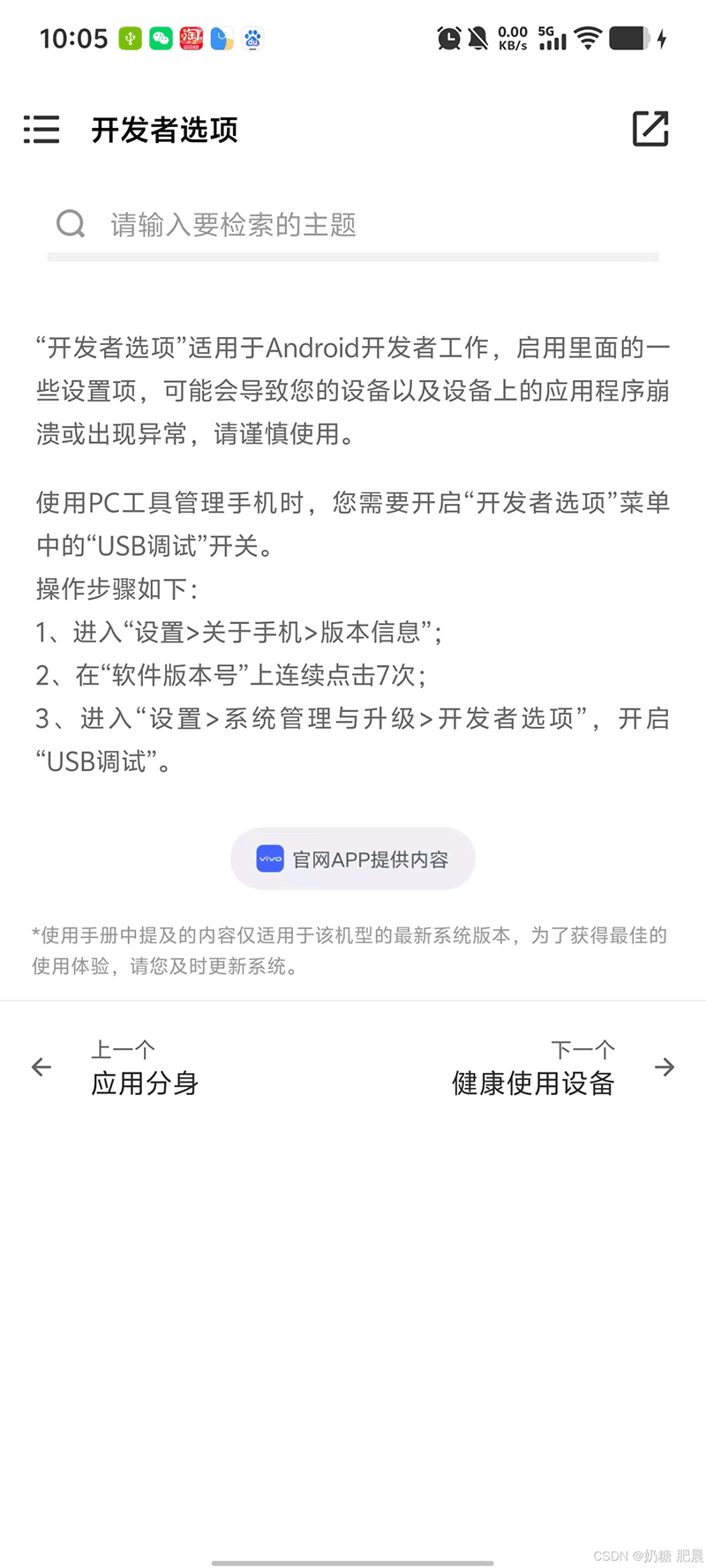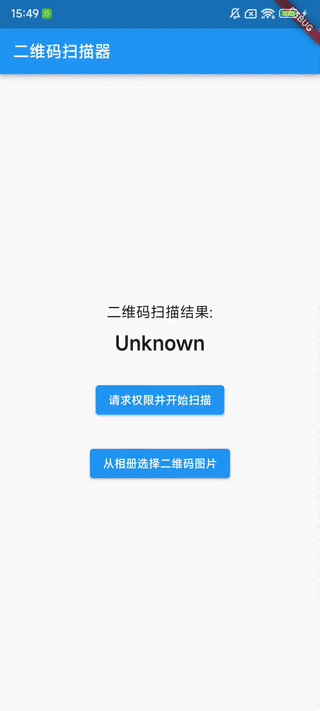其实不管是哪种滑动方式,基本思想都是类似的:当点击事件传递到View时,系统记下触摸点的坐标,手指移动的时候,系统记下移动后的坐标,并计算出偏移量,并通过偏移量来修改View的坐标。
下面我们来讲下几种滑动方法:
1.layout方法
大家知道,绘制View的时候会调用onlayout方法来设置要显示的位置。因此我们也可以通过修改view的left,top,right,bottom这4个属性来控制view的坐标。接下来我们来自定义一个View,通过layout方法来实现滑动:
|
1 2 3 4 5 6 7 8 9 10 11 12 13 14 15 16 17 18 19 20 21 22 23 24 25 26 27 28 29 30 31 32 33 34 35 36 |
package com.example.myapplication.views
import android.content.Context import android.util.AttributeSet import android.view.MotionEvent import android.view.View
class CustomView @JvmOverloads constructor( context: Context, attrs:AttributeSet? = null, defStyleAttr:Int= 0 ) :View( context,attrs,defStyleAttr){ private var lastX:Int = 0 private var lastY:Int = 0
override fun onTouchEvent(event: MotionEvent): Boolean { //获取手指触摸点的横坐标和纵坐标 val x = event.x.toInt() val y = event.y.toInt() when(event.action) { MotionEvent.ACTION_DOWN -> { lastX = x lastY = y } MotionEvent.ACTION_MOVE -> { //计算移动距离 val offsetX = x -lastX val offsetY = y -lastY //调用layout方法来重新放置他的位置 layout(left+offsetX,top+offsetY,right + offsetX, bottom + offsetY) } } return true } } |
然后我们把他放到XML里去使用:
|
1 2 3 4 5 6 7 8 9 10 11 12 13 |
<?xml version="1.0" encoding="utf-8"?> <LinearLayout xmlns:android="http://schemas.android.com/apk/res/android" android:layout_width="match_parent" android:layout_height="match_parent" android:orientation="vertical"> <com.example.myapplication.views.CustomView android:id="@+id/view_my" android:layout_width="100dp" android:layout_height="100dp" android:layout_gravity="center_horizontal" android:background="@mipmap/cai"/>
</LinearLayout> |
看下效果:

这个移动的效果实现。
2.接下来,我们看看offsetLeftAndRight()与offsetTopAndBottom()方法
这两种方法和layout方法差不多,我们稍加修改就可以。我们替换下ACTION_MOVE中的代码块:
|
1 2 3 4 5 6 7 8 9 10 11 12 |
MotionEvent.ACTION_MOVE -> { //计算移动距离 val offsetX = x -lastX val offsetY = y -lastY //对left和right进行偏移 offsetLeftAndRight(offsetX) //对top和bottom进行偏移 offsetTopAndBottom(offsetY)
// //调用layout方法来重新放置他的位置 // layout(left+offsetX,top+offsetY,right + offsetX, bottom + offsetY) } |
仍然能够实现。
3.第三个方法:LayoutParams(改变布局参数)
LayoutParams主要保存了一个View的布局参数,因此我们可以通过LayoutParams来改变View的布局参数。从而达到改变View位置的效果。我们同样替换下ACTION_MOVE中的代码块:
|
1 2 3 4 5 6 7 8 9 10 11 12 13 14 15 16 17 18 |
MotionEvent.ACTION_MOVE -> { //计算移动距离 val offsetX = x -lastX val offsetY = y -lastY val layoutParams = layoutParams as LinearLayout.LayoutParams layoutParams.leftMargin = left + offsetX layoutParams.topMargin = top + offsetY setLayoutParams(layoutParams)
// //对left和right进行偏移 // offsetLeftAndRight(offsetX) // //对top和bottom进行偏移 // offsetTopAndBottom(offsetY)
// //调用layout方法来重新放置他的位置 // layout(left+offsetX,top+offsetY,right + offsetX, bottom + offsetY) } } |
不过经过我实验,这个有挺大的偏差,总是靠右边。什么原因?
4.接下来,看看使用第四种方法,使用动画来滑动。
|
1 2 3 4 5 6 7 |
<?xml version="1.0" encoding="utf-8"?> <set xmlns:android="http://schemas.android.com/apk/res/android" android:fillAfter="true"> <translate android:fromXDelta="0" android:toXDelta="300" /> </set> |
使用代码调用:
|
1 |
findViewById<View>(R.id.view_my).animation = AnimationUtils.loadAnimation(this,R.anim.translate) |
需要注意的是,view动画,并不能改变view的位置参数。所以我们点击Button并不会触发,因为他的负控件要先判断点击事件是否在子view的位置参数范围内才会分发给他,当我们点击原来的位置的时候,才会响应。如果我们想让他在移动后的位置响应,也就是说更改view的位置参数,那么可以使用属性动画。
|
1 2 3 4 |
val customView = findViewById<View>(R.id.view_my) findViewById<Button>(R.id.btn_move).setOnClickListener { ObjectAnimator.ofFloat(customView,"translationX",0f,300f).setDuration(1000).start() } |
5.接下来我们看看第五种方法,scrollTo与ScrollBy
scrollTo(x,y)表示移动到一个具体的坐标点,而scrollBy(dx,dy)表示移动的增量为dx,dy,其实我们看源码就知道scorllBy最终也是计算出最终坐标,最终调用scrollTo的。我们可以看下源码:
|
1 2 3 |
public void scrollBy(int x, int y) { scrollTo(mScrollX + x, mScrollY + y); } |
需要注意的是,scrollTo和ScrollBy是移动的内容。我们如果设置了Bacgroud会发现看不出效果。可以改下:
|
1 2 3 4 5 6 |
<com.example.myapplication.views.CustomView android:id="@+id/view_my" android:layout_width="100dp" android:layout_height="100dp" android:layout_gravity="center_horizontal" android:foreground="@mipmap/cai"/> |
|
1 2 3 4 |
findViewById<Button>(R.id.btn_move).setOnClickListener { customView.scrollBy(50,100) // ObjectAnimator.ofFloat(customView,"translationX",0f,300f).setDuration(1000).start() } |
使用foreground。接着看下效果:

最开始是这样的,然后我们点击下按钮,变成了这样:

是不是发现了神奇的现象。再点击一次:

好家伙,快看不到了。什么原因呢?这里有两个奇怪的现象,第一个是他似乎移动的方向是相反的,第二个是是越来越小。准确说,是好像并不是缩小,而是只能看到局部。
这是因为参照物的不同导致的。假设,我们把手机屏幕比喻为放大镜。下面的内容当作报纸。我们调用这个方法,实际是使放大镜相对于这个view,往下移动了,放大镜看不到的地方不并是不存在了。所以他才看起来像是往左上移动了。然后,因为我们是内容在移动,所以View本身并没有移动,所以他的前景色就看不到了。
我们如果希望能做到随手指移动,可以在move方法里这样修改:
|
1 2 3 4 5 6 7 8 |
MotionEvent.ACTION_MOVE -> { //计算移动距离 val offsetX = x -lastX val offsetY = y -lastY
val parentView = parent as View parentView.scrollBy(-offsetX,-offsetY) } |
这里,取相反的值,岗刚说了,是因为参考物,会导致视觉相反。而要取他的parent,是因为这个view就属于他的parent的内容。所以,他就可以进行相关的动作。
6.来看第六种方法Scroller
我们在使用scrollTo/scrollBy方法进行滑动的时候,这个过程是瞬间就完成的。所以体验就不是太好。我们可以使用scroller来实现有过度效果的滑动。但是scroller本身是不能实现View的滑动,它需要与View的computeScroller 方法配合才能实现弹性滑动效果。来看代码实现:
首先,定义个成员变量:
|
1 |
private val mScroller = Scroller(context) |
接下来,我们重写computeScroll方法,系统会绘制View的时候,在draw方法里调用该方法。
我们先在CustomView里定义个方法:
|
1 2 3 4 5 6 |
fun smoothScrollTo(destX:Int, destY:Int){ val scrollX = scrollX val delta = destX - scrollX mScroller.startScroll(scrollX,0,delta,2,2000) invalidate() } |
这个方法是提供给外部调用的,参数是想偏移的X和Y。
scrollX是目前已经滑动值,拿目的要偏移的减去已经滑动的,就是还剩下的。调用scroller.startScroll()方法。设置一个duration。我们调用invalidate()就开始重绘。这个时候就会调用view的computeScroller方法。这里面我们调用父空间viewGroup的scroollTo方法,来获取当前的一小段滑动值,然后行成小的滑动。接着调用invalidate()方法不断的重绘。
|
1 2 3 4 5 6 7 |
override fun computeScroll() { super.computeScroll() if (mScroller.computeScrollOffset()) { (parent as View).scrollTo(mScroller.currX,mScroller.currY) invalidate() } } |
最后,我们在activity里调用:
|
1 |
customView.smoothScrollTo(-400,0) |
向右边平移400。


